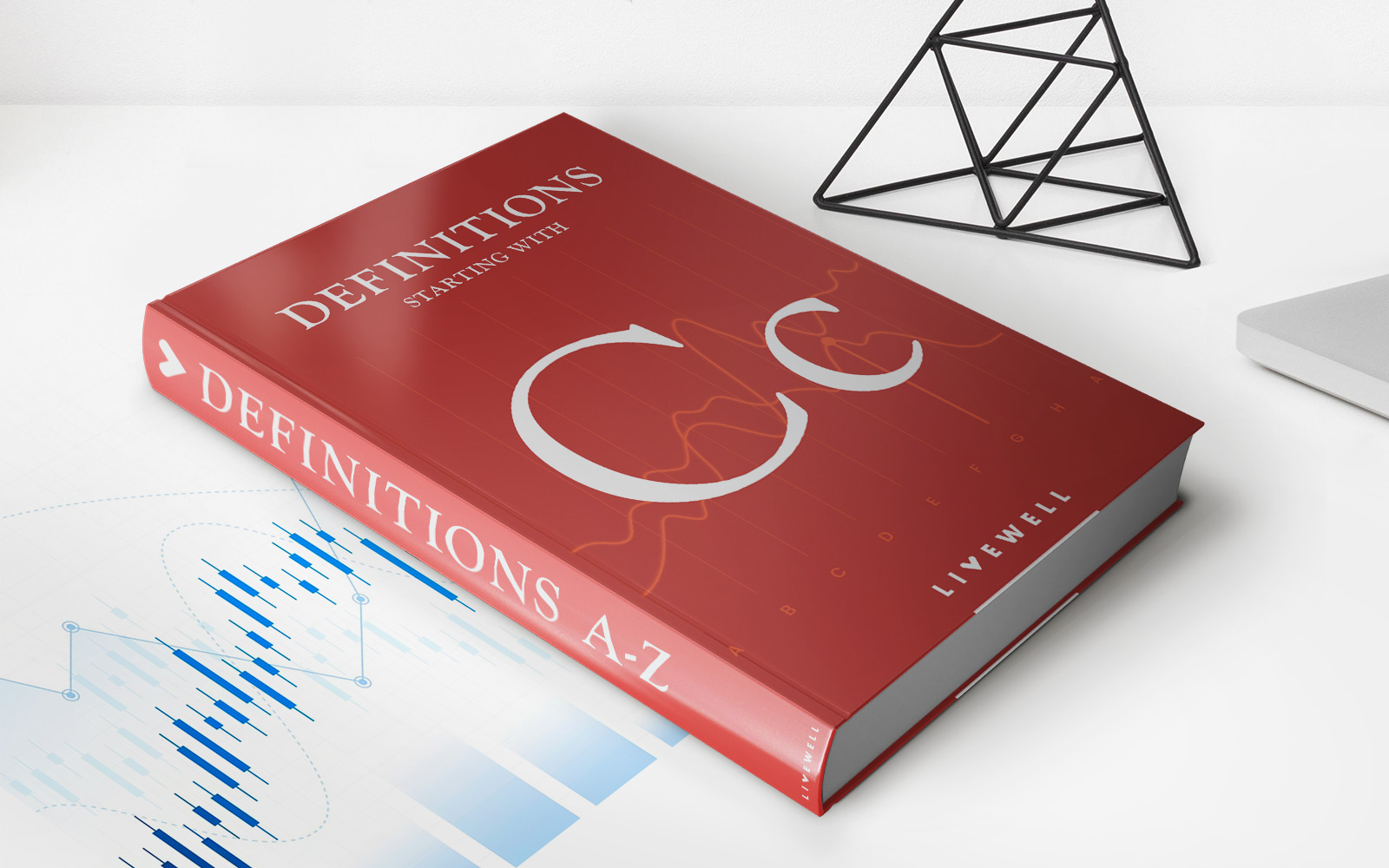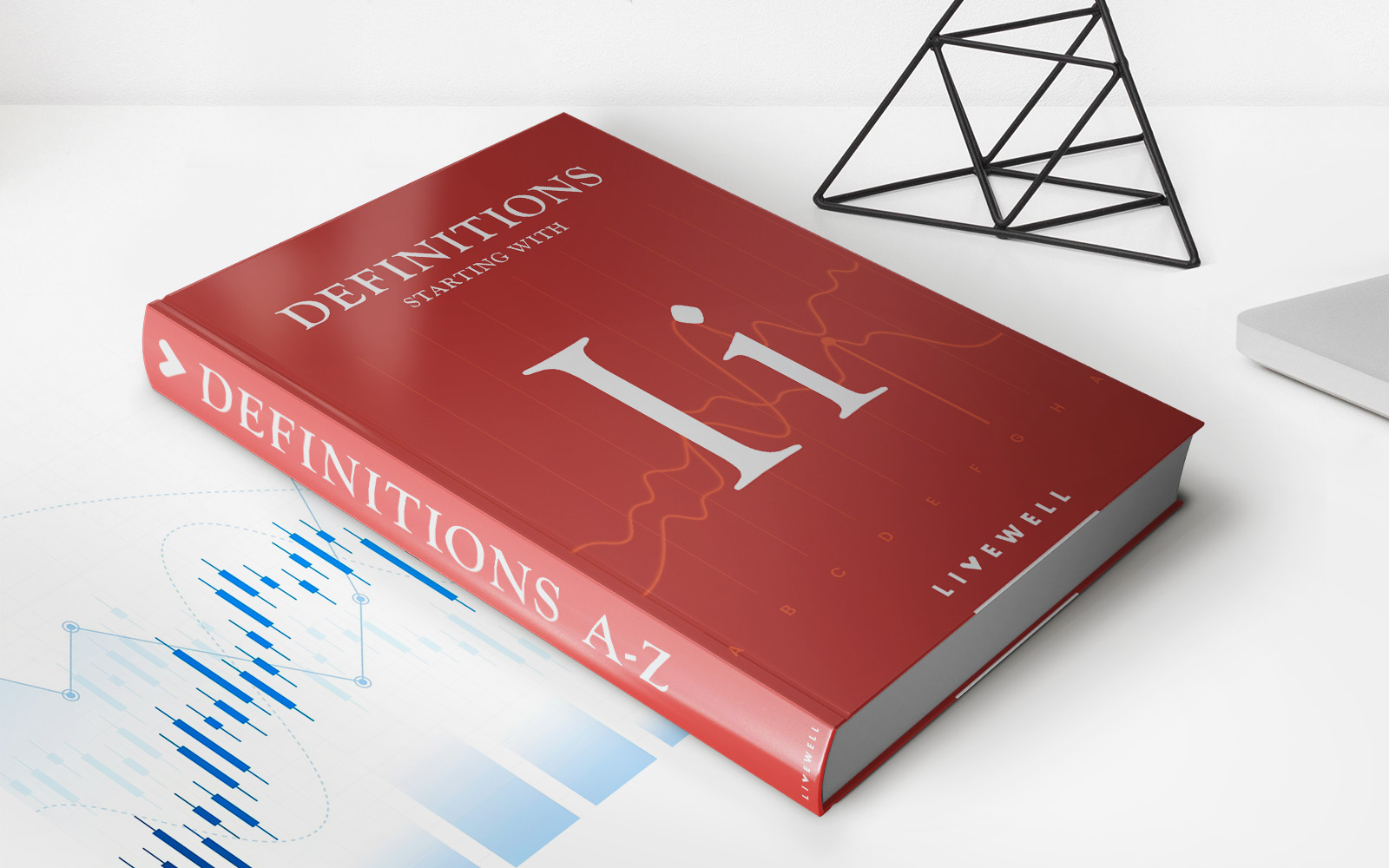Home>Finance>How Does Leasing In A Capital Structure Affect WACC


Finance
How Does Leasing In A Capital Structure Affect WACC
Published: December 25, 2023
Explore the impact of leasing in finance structures and how it influences the weighted average cost of capital (WACC). Uncover the intricacies of leasing and its effects on financial decision-making.
(Many of the links in this article redirect to a specific reviewed product. Your purchase of these products through affiliate links helps to generate commission for LiveWell, at no extra cost. Learn more)
Table of Contents
Introduction
When it comes to financing decisions, companies have various options to consider. One crucial aspect is the capital structure, which refers to the mix of debt and equity used to finance a company’s operations and investments.
In determining the capital structure, companies must carefully assess the impact on their overall financial health and cost of capital. A commonly used metric to evaluate this cost is the weighted average cost of capital (WACC), which represents the average rate of return a company needs to generate to satisfy its investors.
Leasing is one option that companies often use to finance their operations. It allows organizations to acquire assets without the need for large upfront capital investments. Instead, they make regular lease payments over a specified period. Leasing can include various assets, such as equipment, buildings, or vehicles.
In this article, we will delve into the relationship between leasing in a capital structure and its impact on WACC. We will explore the factors that affect WACC in the context of leasing and discuss the advantages and disadvantages of incorporating leasing into a company’s capital structure. Furthermore, we will examine several case studies to understand how leasing affects WACC in real-world scenarios.
Understanding the impact of leasing on WACC is crucial for companies as it can significantly influence their ability to attract investors and raise capital efficiently. By comprehending these dynamics, businesses can make informed decisions about their capital structure and optimize their cost of capital.
What is Capital Structure?
Capital structure refers to the way a company finances its operations and investments through a combination of debt and equity. It represents the mix of long-term sources of funding that a company uses to support its activities.
The two primary components of capital structure are debt and equity. Debt financing involves borrowing funds from external sources, such as banks or bondholders, which the company agrees to repay with interest over a specified period. Equity financing, on the other hand, entails selling ownership shares in the company to investors, who become shareholders and bear a portion of the company’s profits and losses.
The decision on the optimal capital structure is crucial for companies as it can have significant implications for their financial health and cost of capital. A well-balanced capital structure enables the company to fund operations and investments effectively while also considering the risk and return expectations of its stakeholders.
There are several factors that influence a company’s capital structure decisions:
- Company Size and Growth Potential: Smaller companies or those with high potential for growth may rely more on equity financing to attract investors who are willing to take on higher risks.
- Industry Characteristics: Certain industries, such as technology or biotechnology, may require substantial investments in research and development or capital-intensive assets. These industries may have higher levels of debt to finance these investments.
- Profitability and Cash Flow: Companies with stable and consistent cash flows may be more inclined to use debt financing, as they have sufficient resources to meet interest and principal payments.
- Risk Appetite: Companies with a lower risk appetite may prefer a more conservative capital structure with lower levels of debt. Conversely, companies that are more comfortable with risk may have a higher proportion of debt in their capital structure.
- Market Conditions: The availability and cost of debt and equity capital in the market can influence a company’s capital structure decisions. During economic downturns, companies may rely more on debt financing as equity may be less accessible.
By carefully considering these factors, companies can determine an optimal capital structure that balances the cost of financing with the risk and return expectations of their stakeholders.
What is WACC?
The weighted average cost of capital (WACC) is a financial metric that represents the average rate of return a company needs to generate in order to satisfy its investors and cover the cost of financing its operations.
WACC takes into account the cost of both debt and equity financing, as well as the proportion of each in the company’s capital structure. It is calculated as a weighted average of the cost of debt and the cost of equity, with the weights representing the proportion of each financing source in the company’s overall capital structure.
The cost of debt is relatively straightforward to calculate, as it represents the interest rate that the company pays on its outstanding debt. It considers both the interest expense and any associated fees or charges.
The cost of equity, on the other hand, is more complex to determine. It represents the rate of return that investors expect to earn from investing in the company’s equity shares. It takes into account factors such as the company’s risk profile, growth prospects, and the overall market conditions.
By incorporating both the cost of debt and the cost of equity, WACC provides a holistic measure of the company’s cost of capital. It reflects the blended rate of return that the company needs to generate in order to meet the expectations of its debt and equity stakeholders.
WACC is important for a variety of reasons. Firstly, it is used as a discount rate to assess the feasibility of new investment projects. If the internal rate of return on a potential project is less than the WACC, the project may be considered unattractive. Additionally, WACC is used in valuation models to estimate the present value of a company’s future cash flows.
A company’s WACC can vary over time and may change as its capital structure evolves. Factors such as changes in interest rates, creditworthiness, and market conditions can impact the cost of debt and subsequently influence the WACC. Therefore, it is crucial for companies to regularly evaluate and monitor their WACC to ensure it remains an accurate representation of their cost of capital.
Leasing in Capital Structure
Leasing is a financing option that companies often consider when constructing their capital structure. It provides an alternative to purchasing assets outright by allowing businesses to rent or lease them for a specified period.
When incorporating leasing into their capital structure, companies have two main options: operating leases and financial leases. Operating leases are typically shorter-term agreements where companies rent assets for a specific period. Financial leases, on the other hand, are longer-term agreements that mirror the benefits of asset ownership, often with an option to purchase the asset at the end of the lease term.
Including leasing in a company’s capital structure can bring several advantages. Firstly, leasing allows businesses to acquire necessary assets without a significant upfront cash outlay. This can be particularly beneficial for startups or companies with limited capital resources.
Leasing also provides flexibility as it allows companies to access the latest equipment or technology without the long-term commitment associated with owning assets. It enables businesses to upgrade their equipment or make changes more easily as their needs evolve.
Furthermore, leasing can have tax advantages. In many jurisdictions, lease payments are considered operating expenses and can be fully deducted from taxable income. This reduces the company’s tax liability, potentially leading to lower overall costs of financing.
However, there are also potential disadvantages to including leasing in a company’s capital structure. Firstly, leasing can be more expensive than traditional debt financing options in the long run. While the upfront costs may be lower, the cumulative lease payments over the lease term can exceed the cost of purchasing the asset outright.
Additionally, leasing may limit the company’s ability to use the leased asset as collateral for future financing needs. This can restrict access to other financing options or increase the cost of borrowing in the future.
In summary, leasing provides an alternative financing option for companies to consider when constructing their capital structure. It offers benefits such as flexibility, lower upfront costs, and potential tax advantages. However, it is essential for companies to carefully assess the long-term costs and potential limitations of leasing in order to make informed decisions about its inclusion in their capital structure.
Impact of Leasing on WACC
When considering the impact of leasing on the weighted average cost of capital (WACC), it is important to analyze how the inclusion of lease obligations affects both the cost of debt and the cost of equity components.
Firstly, leasing can impact the cost of debt. When a company incorporates leasing into its capital structure, it may reduce its reliance on traditional debt financing. This can result in a lower overall cost of debt as lease payments are often considered operating expenses and are not included in the calculation of interest expense. As a result, the company’s interest payments may decrease, leading to a lower cost of debt and, consequently, a lower WACC.
On the other hand, leasing can also impact the cost of equity. Equity investors may view a high level of lease obligations as an additional financial risk for the company. This is because lease obligations represent fixed contractual commitments that need to be met, regardless of the company’s financial performance. As a result, investors may require a higher rate of return or demand a higher cost of equity to compensate for this perceived risk. This would lead to an increase in the cost of equity and, therefore, an increase in the WACC.
Overall, the impact of leasing on WACC depends on the specific circumstances of the company and the composition of its capital structure. In some cases, the decrease in the cost of debt may outweigh the increase in the cost of equity, resulting in a lower overall WACC. However, in other cases, the increase in the cost of equity may offset the decrease in the cost of debt, leading to a higher WACC.
It is important for companies to carefully consider the trade-offs and potential impacts when deciding to include leasing in their capital structure. They must weigh the potential cost savings on the debt side against the potential increase in the cost of equity and the impact on overall WACC. This requires a comprehensive analysis that takes into account the company’s risk profile, industry dynamics, and investor expectations.
Ultimately, the impact of leasing on WACC will vary from company to company, and it is essential for businesses to carefully evaluate their specific situation and make informed decisions based on their unique circumstances.
Factors Affecting WACC in Capital Structure Leasing
When incorporating leasing into a company’s capital structure, several factors can influence the weighted average cost of capital (WACC). It is crucial to consider these factors to accurately assess the impact of leasing on the overall cost of financing.
1. Proportion of Leased Assets: The proportion of leased assets in the company’s capital structure can significantly affect the WACC. A higher proportion of leased assets may increase the cost of equity due to the perceived additional financial risk associated with lease obligations. On the other hand, if the company mainly relies on debt financing for lease obligations, the overall cost of debt may be lower, leading to a potential decrease in WACC.
2. Lease Agreements: The terms and conditions of lease agreements can impact the cost of leasing and, consequently, the WACC. For example, longer lease terms may result in higher implied interest rates, leading to increased costs of financing and higher WACC. Additionally, lease agreements with purchase options may offer more favorable terms and potential cost savings, helping to reduce the overall WACC.
3. Creditworthiness: The creditworthiness of the company can affect the cost of debt and equity financing. Higher creditworthiness may result in lower interest rates on debt financing, decreasing the cost of debt and, subsequently, the WACC. Similarly, companies with strong creditworthiness may attract equity investors who are willing to accept lower return expectations, potentially reducing the cost of equity and overall WACC.
4. Market Conditions: Market conditions, such as interest rates and availability of financing, can significantly impact the WACC. Changes in interest rates can affect the cost of debt financing, influencing the overall WACC. Similarly, during periods of tight credit markets, companies may face challenges in obtaining favorable lease terms, potentially leading to higher costs and a higher WACC.
5. Industry and Sector Dynamics: Industry-specific factors can also influence the WACC in capital structure leasing. Industries with high asset intensity or significant reliance on leased equipment may have unique leasing dynamics. Additionally, different industries may have varying perceptions of lease obligations and their impact on financial risk, which can affect the cost of equity and overall WACC.
6. Tax Considerations: Tax laws and regulations can affect the cost of leasing and the overall WACC. In some jurisdictions, lease payments may be tax-deductible as operating expenses, reducing the tax burden and lowering the effective cost of leasing. These tax advantages can potentially decrease the overall WACC.
It is important for companies to carefully analyze and evaluate these factors when assessing the impact of leasing on the WACC. Consideration of these factors will help companies make informed decisions about their capital structure and optimize their cost of financing.
Advantages of Leasing in Capital Structure
When considering the composition of their capital structure, companies often weigh the advantages of including leasing as a financing option. Incorporating leasing into the capital structure can offer several benefits:
1. Lower Initial Costs: One of the primary advantages of leasing is that it allows companies to acquire assets without making a significant upfront cash outlay. Instead of purchasing the assets outright, companies can lease them for a specified period by making regular lease payments. This can be particularly beneficial for companies with limited capital resources or those in need of expensive equipment or machinery.
2. Flexibility: Leasing provides flexibility to companies as it allows them to access the latest technology or equipment without having to commit to long-term ownership. This is especially advantageous in industries where technology and equipment are constantly evolving. Leasing enables businesses to upgrade their assets more easily and stay at the cutting edge of their industry.
3. Preservation of Working Capital: By utilizing leasing, companies can preserve their working capital for other essential business activities, such as research and development, marketing, or expansion. Instead of tying up their capital in purchasing assets, companies can allocate it to areas that drive growth and innovation.
4. Tax Benefits: In many jurisdictions, lease payments are considered operating expenses and can be fully deducted from taxable income. This reduces the company’s taxable income and, consequently, its tax liability. The tax advantages of leasing can result in lower overall costs of financing and contribute to improved cash flow.
5. Maintenance and Repair Coverage: Depending on the terms of the lease agreement, the lessor may be responsible for maintenance and repair costs. This relieves the lessee from the burden of routine maintenance and unexpected repair expenses, reducing the overall operating costs associated with asset ownership.
6. Off-Balance Sheet Financing: Certain types of leases, such as operating leases, may allow companies to keep the leased assets off their balance sheet. This can improve a company’s financial ratios and make it more attractive to lenders and investors.
It is important to note that the advantages of leasing in the capital structure may vary depending on the specific circumstances of the company and the industry it operates in. It is crucial for companies to carefully evaluate their unique needs, financial constraints, and long-term business goals to determine whether leasing is the right choice for their capital structure.
Disadvantages of Leasing in Capital Structure
While including leasing as a financing option in the capital structure can bring several advantages, there are also certain disadvantages that companies need to consider:
1. Higher Long-Term Costs: Leasing assets over a long period can result in higher total costs compared to purchasing them outright. Although the initial cash outlay may be lower, the cumulative lease payments can exceed the cost of ownership. This can lead to higher expenses and lower profitability in the long run.
2. Lack of Ownership Benefits: When a company leases assets, it does not gain ownership rights. This means that it cannot benefit from any potential appreciation in asset value. Additionally, leased assets cannot be used as collateral for obtaining additional financing, which may limit the company’s ability to secure loans or lines of credit.
3. Potential Restrictions on Usage: Lease agreements may come with certain restrictions on how the assets can be used. This can limit the company’s flexibility and may prevent it from using the assets in ways that could optimize its operations or generate additional revenue streams.
4. Risk of Technological Obsolescence: Leasing assets, especially those related to technology or equipment, may expose the company to the risk of technological obsolescence. As technology advances rapidly, leased assets may become outdated or less efficient compared to newer alternatives. This may result in the lessee being stuck with assets that are no longer competitive or in high demand.
5. Potential Impact on Financial Ratios: Depending on the terms of the lease agreement, including lease obligations in the capital structure may result in a higher level of debt and affect financial ratios. This can impact how the company is perceived by investors, lenders, and rating agencies, potentially leading to higher borrowing costs and reduced access to capital.
6. Lease Termination Penalties: Ending a lease agreement prematurely may result in significant penalties or fees. This can be problematic if the company’s needs change or if unforeseen circumstances require the termination of the lease before the agreed-upon term.
It is crucial for companies to carefully evaluate these disadvantages alongside the advantages to make an informed decision about including leasing in their capital structure. A thorough analysis of the company’s financial situation, industry dynamics, and long-term goals is essential in determining the suitability of leasing as a financing option.
Case Studies on the Effect of Leasing on WACC
Examining real-world case studies can provide valuable insights into the effect of leasing on the weighted average cost of capital (WACC) and its implications for companies. Let’s explore a few examples:
1. Company A is a technology startup that needs to acquire specialized equipment for its operations. Due to limited initial capital, the company decides to lease the equipment instead of purchasing it. By including the lease payments as operating expenses, the company manages to reduce its overall cost of debt and lower its WACC. This enables Company A to attract investors and secure additional financing for growth.
2. Company B operates in the transportation industry and opts to lease a fleet of vehicles instead of purchasing them outright. The lease allows the company to avoid large upfront costs and maintain more control over its capital resources. However, the higher lease payments and potential restrictions on usage increase the company’s overall cost of debt and raise the WACC. Company B needs to carefully assess the impact on profitability and evaluate alternative financing options to optimize its capital structure.
3. Company C, an established manufacturing company, decides to lease a portion of its production facilities instead of owning the facilities outright. This allows the company to reduce its capital investment and free up funds for other strategic initiatives. The inclusion of lease payments as operating expenses lowers the company’s cost of debt and decreases the WACC. Consequently, Company C can improve its financial ratios, attract investors, and maintain a competitive advantage.
These case studies demonstrate that the effect of leasing on WACC can vary depending on the specific circumstances and industry dynamics. In some cases, leasing can result in a lower overall cost of financing and a reduced WACC, providing companies with greater financial flexibility and improved access to capital. However, in other instances, leasing may lead to higher costs and an increased WACC, necessitating a thorough evaluation of the risks and benefits.
It is crucial for companies to conduct their own financial analysis and take into account factors such as lease terms, industry characteristics, and growth prospects when considering the inclusion of leasing in their capital structure. By doing so, companies can leverage leasing as a strategic financing tool and optimize their WACC to support their long-term growth and profitability objectives.
Conclusion
Understanding the relationship between leasing in a company’s capital structure and its impact on the weighted average cost of capital (WACC) is vital for businesses to make informed financing decisions. Leasing can offer advantages such as lower initial costs, flexibility, preservation of working capital, and potential tax benefits. However, it also comes with potential disadvantages such as higher long-term costs, lack of ownership benefits, and restrictions on asset usage.
The inclusion of lease obligations in a company’s capital structure can impact both the cost of debt and the cost of equity, which in turn affects the WACC. While lease payments may reduce the cost of debt, they can increase the perceived risk for equity investors, potentially leading to a higher cost of equity and a higher overall WACC.
Factors such as the proportion of leased assets, lease agreements, creditworthiness, market conditions, industry dynamics, and tax considerations all play a role in determining the impact of leasing on the WACC. Each company must carefully assess these factors and conduct a comprehensive analysis to make informed decisions about including leasing in the capital structure.
Real-world case studies further illustrate the diverse impact of leasing on the WACC. The effect can vary depending on the company’s specific circumstances, industry dynamics, and financial objectives. It is crucial for businesses to thoroughly evaluate the costs, benefits, and trade-offs associated with leasing, considering both short-term and long-term implications.
In conclusion, leasing can be a valuable financing option in the capital structure, offering advantages such as cost flexibility and access to necessary assets. However, it requires careful consideration of the potential impact on the WACC and the overall financial health of the company. By carefully evaluating the specific circumstances and conducting a thorough analysis, businesses can make informed decisions about including leasing in their capital structure and optimize their cost of financing.














